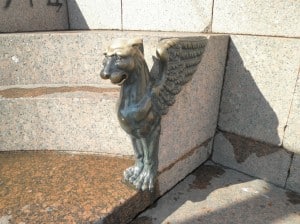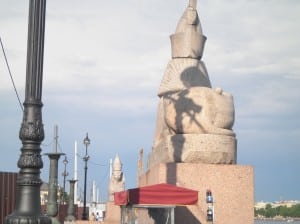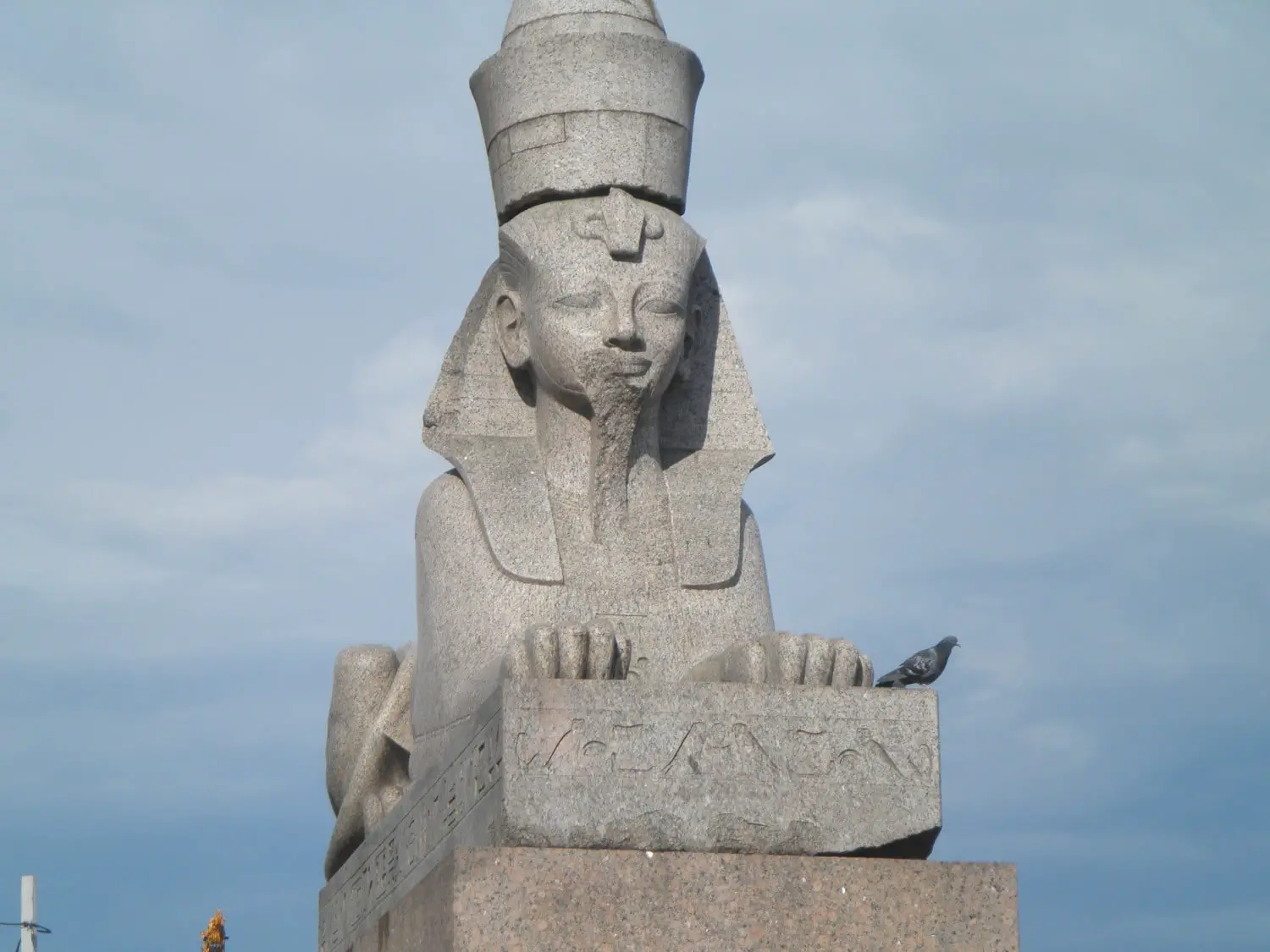During an SRAS-arranged walking tour of central St. Petersburg, our guide, Sergei, pointed across the Neva River to the Quay with Sphinxes, a little outpost on the University Embankment near house number 17. The site displays two massive sphinxes that are carved out of pink granite and weigh about 23 tons each. I was so fascinated by these monuments that I decided to dedicate a blog post to them
I began my mission by making a few trips over to the quay and scouting out the area. In addition to the sphinxes, I noticed two Greek-style columns and griffins that decorated the quay, making it a beautiful waterfront area to hang around. There are also souvenir stands nearby that sell sphinx-inspired items and various St. Petersburg maps, guides, and trinkets for about $5 and up.

The sphinxes, are 3,500-year-old monuments that once stood in the Alley of Sphinxes in Egypt, serving as guards at the tomb of Pharaoh Amenhotep. They were discovered by French excavators in Egypt in the 1820s. In 1832, Tsar Nicholas I, influenced by the “Egyptomania” trend prevalent throughout the Western world at the time, purchased them from France as an exotic way to spice up St. Petersburg.
These ancient monuments were originally located in the courtyard of the Russian Academy of Arts, but were moved to the waterfront in 1834 after a pier was constructed for them. The great Russian architect Konstantin Ton designed pedestals for the sphinxes and added columns and griffins to the site in order to make the quay even grander.
Despite the vast climate differences between Russia and Egypt, the sphinxes have held up well in St. Petersburg during their two-hundred-year stay (thanks in part to several restorations), though there has been debate on whether to keep them on the Neva or to move them to the Hermitage. Nevertheless, no matter where the sphinxes end up, they have established themselves as iconic fixtures in the city, and will remain so.

Several superstitions have developed around the sphinxes since their arrival in St.Petersburg. For example, there is a belief that the sphinxes’ facial expressions change throughout the course of the day. In the early hours, from about morning to noon, the sphinxes display calm, benevolent expressions. However, as darkness approaches, their moods shift towards being dangerous and menacing. Some even believe that it is possible to go mad if one sees the exact moment that they change from being peaceful to foreboding! However, one of the more positive legends claims that if you pet one of the sphinxes (provided you do so before one of their violent mood swings), it will become your loyal, benevolent guardian, protecting you during your stay in St. Petersburg and beyond.
From the pharaohs on the Nile to the tsars on the Neva, the sphinxes have now made their home in St.Petersburg, and add a touch of Ancient Egyptian history and mystique to the brilliance of the city.







